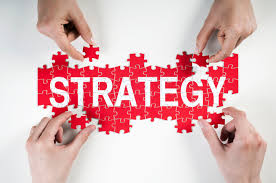6 Critical Strategies to Take Your Nonprofit to the Next Level

Strategy is word that often gets watered down in the nonprofit world. We have operational strategies, donor retention strategies, and social media strategies. It can be confusing when we try to figure out how all of the integral components of a strategy are supposed to connect to one another.
Today, we wanted to take a moment to highlight the most essential, fundamental strategies every nonprofit needs in order to succeed. While you may tend to value one over another, all of them are important when it comes to developing a comprehensive strategic agenda that enables your nonprofit to create a lasting impact.
6 Critical Strategies to Take Your Nonprofit to the Next Level
Here are the six essential strategies every nonprofit needs in order to improve your fundraising results and increase your impact:
- Funding Strategy:the funding and financial plans of the organization. These include a wide range of financial requirements: comprehensive fundraising strategies impacting all donor giving levels and sources of support; reports and financial metrics critical to monitoring financial results in both revenue and expenses against plans; and investment strategies and cash flow management.
- Mar-Comm Strategy: the organization’s plan to present a consistent
and compelling message to its customers and donors. The importance of maintaining continuity in the style and content of the “conversation” cannot be overstated. It is also important to address how the organization intends to create awareness of the institution’s work, and how it will educate and engage donors from their first moment of contact. - Information Strategy: Much more than technology, information strategies should be driven by the information needs of the organization. How will the organization effectively analyze its volumes of donor and customer data? The importance of information can be seen in the marked increase in “big data” articles being published on subjects like donor intelligence.
- Program Strategy: How does your organization intend to address the continued evolution of your programs, products, and/or services? How are your programs remaining relevant to the needs of your customers? An organization’s program strategy addresses the development of new products and services, as well as existing ones, ensuring the ongoing, consistent, and effective delivery of services to customers.
- People Strategy: HR systems are vital in creating an effective culture that drives performance. This includes developing staff and leadership talent, creating succession plans, evaluating performance, and providing reward systems that support the kinds of behaviors the organization wants to see repeated over and over. Recruiting, onboarding, training, deploying, and retaining staff are all important elements to a complete people strategy.
- Service Strategy: This strategy sets the service standards that meet and exceed customer expectations. Are customers and donors promoting the work of your nonprofit? Is the staff meeting their performance standards? Are you even aware of what your donors and customers value most? Great brands may be defined in marketing, but they are built and reinforced every day through the experiences of customers and donors.
Does your organization have a strategy for each of these areas? Which do you need to emphasize more in the future?
